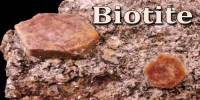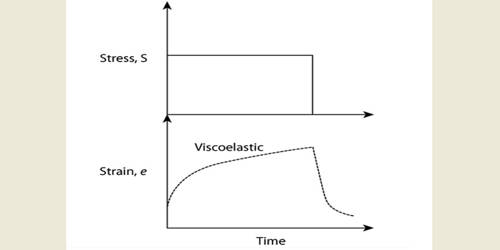Minerals
Definition
Minerals are defined as solid, inorganic, naturally occurring substances with a definite chemical formula and general structure. Almost all chemical elements in the Earth’s crust are associated with at least one mineral. A mineral:
- Is naturally occurring
- Is a solid (at room temperature)
- Is inorganic (mostly)
- Has a fixed chemical formula
- Has an orderly crystalline structure
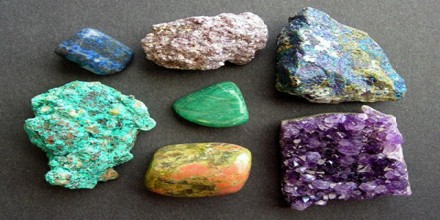
There are over 5,300 known mineral species; over 5,070 of these have been approved by the International Mineralogical Association (IMA). The silicate minerals compose over 90% of the Earth’s crust. The diversity and abundance of mineral species is controlled by the Earth’s chemistry. Silicon and oxygen constitute approximately 75% of the Earth’s crust, which translates directly into the predominance of silicate minerals.
Some minerals are radioactive (uranophane), while others are magnetic (magnetite). Some are uncombined elements, such as gold, silver, sulfur, bismuth, copper and platinum. Certain minerals, such as fluorite (calcium fluoride), glow with a vibrant luminescence after exposure to ultraviolet light.
In order for something to be a mineral, it must first meet four criteria:
- First, all minerals are solid. So, while water may contain minerals, water itself can’t be a mineral because it’s liquid.
- Minerals are all naturally formed. This means they can’t be manufactured in a lab. Synthetic gems, like cubic zirconia, are therefore not minerals.
- All minerals have a unique and specific chemical composition. This is like the DNA of the mineral – it’s what makes the mineral different from other minerals.
- Lastly, all minerals have a crystalline structure. Minerals are some of the most beautiful substances on Earth, because they are always arranged in an orderly geometric pattern. Minerals of the same type always have the same geometric arrangement of their atoms.
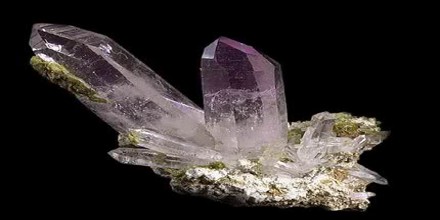
Minerals are classified by key chemical constituents; the two dominant systems are the Dana classification and the Strunz classification. The silicate class of minerals is subdivided into six subclasses by the degree of polymerization in the chemical structure. All silicate minerals have a base unit of a (SiO4)4− silica tetrahedron—that is, a silicon cation coordinated by four oxygen anions, which gives the shape of a tetrahedron. These tetrahedra can be polymerized to give the subclasses: orthosilicates, disilicates, cyclosilicates, inosilicates, phyllosilicates, and tectosilicates. Other important mineral groups include the native elements, sulfides, oxides, halides, carbonates, sulfates, and phosphates.

Properties of Minerals
Minerals are classified by their chemical composition and crystalline structure. These two features occur on a microscopic level, but we can see them in other ways because they determine a mineral’s observable physical properties. In other words, what appears to us on the outside is determined by what’s on the inside.
The seven physical properties of minerals are:
- Crystal form
- Hardness
- Fracture or cleavage
- Luster
- Color
- Streak
- Density
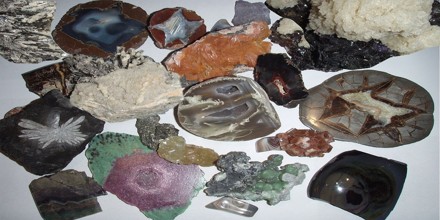
Classifications of Minerals
Minerals, being natural chemicals, are classified according to their chemistry and crystal form.
A basic classification for minerals is:
- Native elements. eg. Gold, Silver, Mercury, graphite, diamond.
- Oxides. eg corundum (incl. sapphire), hematite, spinel.
- Hydroxides. eg. Goethite, brucite.
- Sulfides. eg. Pyrite, galena, sphalerite.
- Sulfates. eg. Baryte, gypsum.
- Carbonates. eg. Calcite, magnesite, dolomite.
- Phosphates. eg. Apatite, monazite.
- Halides. eg. Fluorite, halite (rock salt).
- Silicates (most common)
- Orthosilicates. eg. Garnet, olivine.
- Ring silicates. eg. Tourmaline, beryl.
- Chain silicates. eg. Pyroxenes, amphiboles.
- Sheet silicates. eg. Muscovite mica, biotite mica, clay minerals
- Framework silicates. eg. Quartz, feldspars, zeolites


